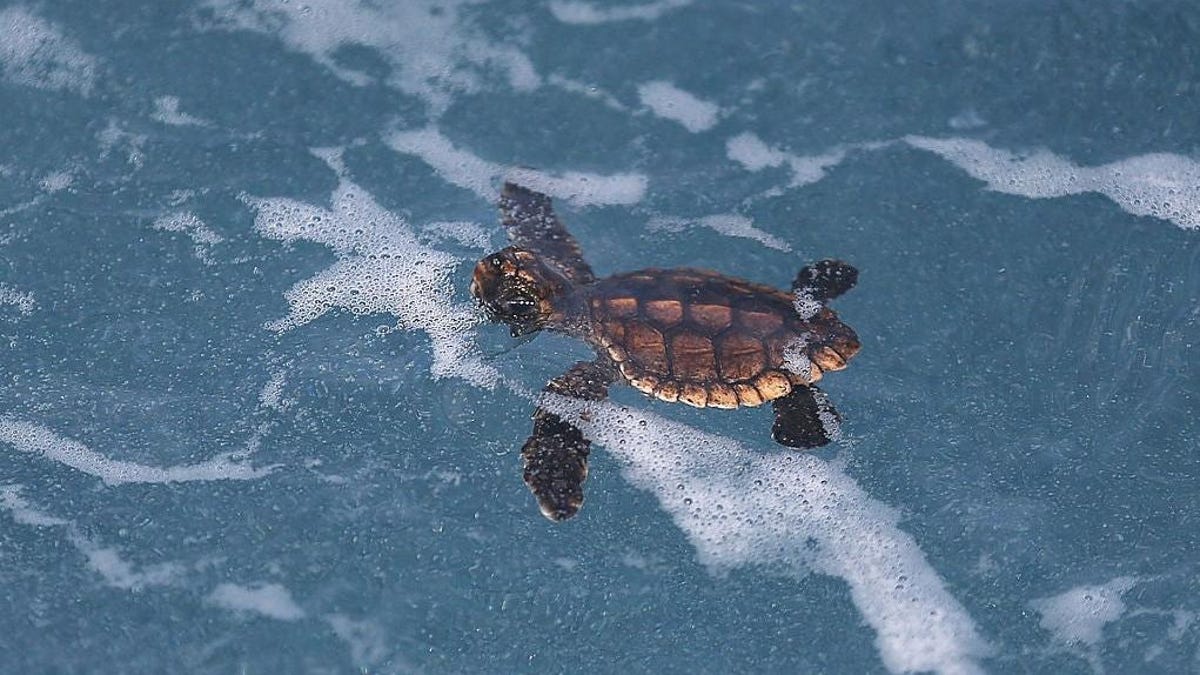
Climate change is coming for sea turtles and their critical breeding grounds throughout the Americas and Australia. In a new study in Scientific Reports, researchers report that rapid sea level rising is likely to swallow up beaches where sea turtles lay their eggs.
The study looked at leatherback, loggerhead, hawksbill, olive ridley, and green sea turtles, all of which are protected under the Endangered Species Act. Researchers looked at different greenhouse gas emissions scenarios, nest locations, and the topography of certain locations. That allowed them to calculate if the beaches studied throughout Latin America, the U.S., the Caribbean, and Australia would see enough sea level rise to flood critical breeding grounds for the sea turtles.
Advertisement
They warned that “pessimistic scenarios could be more accurate than conservative scenarios” of sea level rise. “Under moderate climate change scenarios, by 2050 it is predicted that at some sea turtle nesting habitats 100% will be flooded,” the study read. “And under an extreme scenario many sea turtle rookeries could vanish.” Even under moderate greenhouse gas emissions scenarios, breeding grounds on flat beaches are predicted to become vulnerable to flooding. Leatherback turtle nests are also going to be vulnerable to sea level rise compared to other sea turtles, because this species tends to lay eggs in open areas.
Though sea turtles are marine animals that spend their time in the water, they need to lay eggs on land. Female turtles return to the same beach every year, and if rapid sea level rise floods their beaches in only a few decades, there may not be enough time for them to form new habits. The study authors acknowledged that there are still some information gaps as to how well some of the sea turtle species can adapt to sea level rise. “An unknown variable is the potential for sea turtles to adapt to new scenarios. Therefore, their survivorship will depend on their resilience and adaptability to rapid changes within their nesting habitats,” they wrote.
Advertisement
Climate change is altering life for sea turtles already. Increasingly hot summers mean that there are more female sea turtle hatchlings, versus a mix of male and female. Researchers have found this to affect sea turtles in different locations, including in Australia and Florida. Without a mix of both male and female turtles, breeding seasons will yield fewer hatchlings to replenish the endangered turtle populations. During the 2021 Texas deep freeze, volunteers raced to save turtles in the Gulf of Mexico. The creatures were unable to regulate their body temperatures when thermometers rapidly dropped, so they were stunned and unable to swim in the abnormally frigid weather.
Climate change is cooking up all manner of problems for the planet’s living things, and sea turtles in particular may be in for a rough ride.
Advertisement
Want more climate and environment stories? Check out Earther’s guides to decarbonizing your home, divesting from fossil fuels, packing a disaster go bag, and overcoming climate dread. And don’t miss our coverage of the latest IPCC climate report, the future of carbon dioxide removal, and the invasive plants you should rip to shreds.
Services Marketplace – Listings, Bookings & Reviews